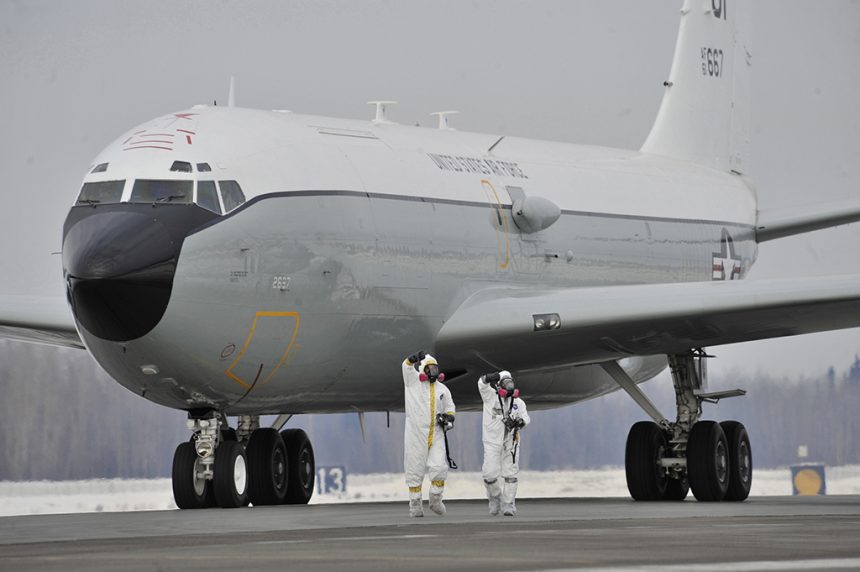The WC-135 is going to search for fallout from the alleged North Korean test.
A U.S. Air Force WC-135 will soon be in action near the Korean peninsula, searching for fallout from the alleged North Korea’s nuclear test.
According to the Washington Post, a U.S. defense official confirmed that the WC-135 Constant Phoenix atmospheric collections aircraft will be used to determine whether the provocative nuclear detonation claimed by Pyongyang was really a hydrogen blast.
As we reported on a previous article on this aircraft, the WC-135 is a derivative of the Boeing C-135 transport and support plane. Two of these aircraft are in service today out of the ten examples operated since 1963. The aircraft are flown by flight crews from the 45th Reconnaissance Squadron from Offutt Air Force Base while mission crews are staffed by Detachment 1 from the Air Force Technical Applications Center.
The WC-135, known as the “sniffer” or “weather bird” by its crews, can carry up to 33 personnel. However, crew compliments are kept to a minimum during mission flights in order to lessen levels of radioactive exposure.
Effluent gasses are gathered by two scoops on the sides of the fuselage, which in turn trap fallout particles on filters. The mission crews have the ability to analyze the fallout residue in real-time, helping to confirm the presence of nuclear fallout and possibly determine the characteristics of the warhead involved: that’s why the aircraft is important to confirm the type of explosion of today’s test.
As a former WC-135 aircrew member explained to us in a comment to a previous article on this aircraft: “airframes have two large supplemental charcoal filter packs, as well as HEPA/ULPA filters (we called them “lungs”) for their cabin air. When the instruments indicate contact with radioactive debris, the crew will also reduce cabin airflow to just maintain pressurization, and all personnel on board will go to 100% oxygen through their masks. They will stay on 100% O2 until activity readings drop back down into the safe levels. Everybody wears a dosimeter, and those records are monitored to prevent unsafe exposure.”
Along with monitoring nuke testing, the WC-135 is used to track radioactive activity as happened after the Chernobyl nuclear plant disaster in the Soviet Union in 1986 and Fukushima incident back in 2011.
After being deployed near North Korea in anticipation of Kim Jong Un rocket launches a WC-135 was spotted transiting the UK airspace in August 2013 raising speculations it was used in Syria thanks to the ability to detect chemical substances down wind from the attack area days, or weeks after they were dispersed.
Image credit: U.S. Air Force
















